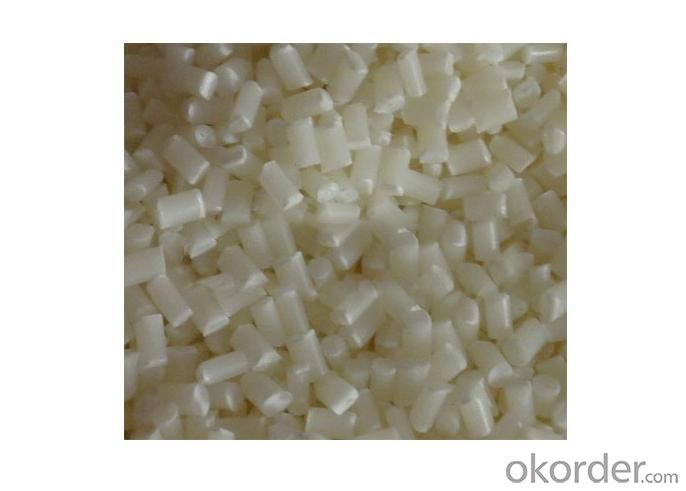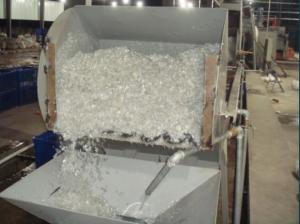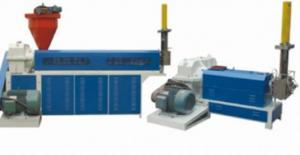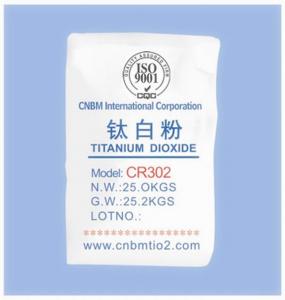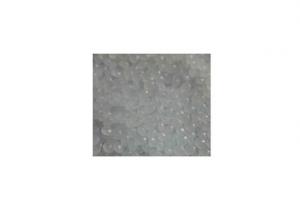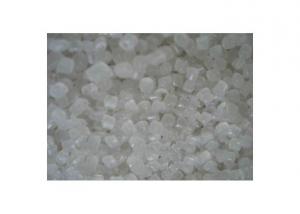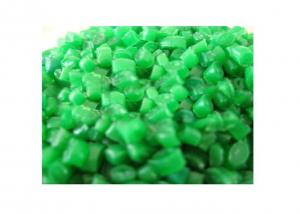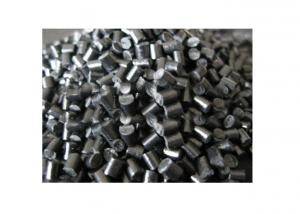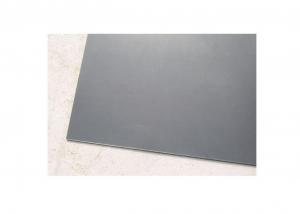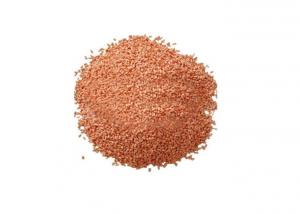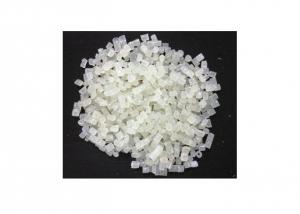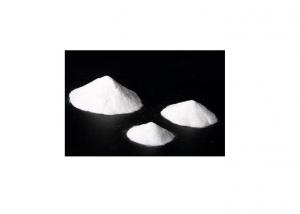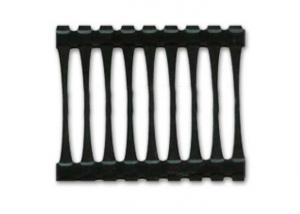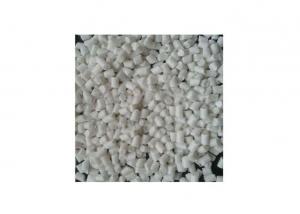Hot Virgin & Recycled ABS Plastic Raw Material
- Loading Port:
- China Main Port
- Payment Terms:
- TT or LC
- Min Order Qty:
- 5 Metric Tons m.t.
- Supply Capability:
- 5000 Metric Tons per Month m.t./month
OKorder Service Pledge
OKorder Financial Service
You Might Also Like
Detailed Product Description
1, Injection molding, extrusion, blow grade
2,high impact ability,hardness
3,density is 1.05g/cm3
Technical data sheet for your reference.
|
Item |
Test condition |
Test method |
Test data |
Data unit |
|
MFR |
200°C/5kg |
ASTM-D1238 |
5.0 |
g/10min |
|
water absorption |
|
ASTM-D570 |
0.3 |
% |
|
proportion |
|
ASTM-D792 |
1.17 |
g/cm³ |
|
Mould Shrinkage |
|
ASTM-D955 |
0.4-0.6 |
% |
|
tensile strength |
|
ASTM-D638 |
380 |
kg/(R) |
|
elongation |
|
ASTM-D638 |
20 |
% |
|
bending strength |
|
ASTM-D790 |
560 |
kg/(R) |
|
flexural modulus |
|
ASTM-D790 |
21000 |
kg/(R) |
|
notch impact strength |
1/8" |
ASTM-D256 |
18 |
kg./cm² |
|
Rockwell hardness |
23°C |
ASTM-D785 |
98 |
R-Scale |
|
distortion temperature |
|
ASTM-D648 |
78 |
°C |
|
Vicat softening point |
|
ASTM-D1525 |
95 |
°C |
|
flame retardant rating |
1/8" |
UL94 |
V-0 |
|
Character:
1) ABS is a high strength, good toughness, easy process forming of thermoplastic polymer material.
2) It is the graft copolymer of Acrylonitrile, Butadiene and Styrene.
3) ABS plastic molding temperature of 180-250 ° C, but preferably not more than 240 ° C, or resin will break down.
Details: 15% to 35% of acrylonitrile, 5% to 30% of butadiene, 40% ~ 60% of styrene, the most common ratio is A: B: S = 20: 30: 50.
Application:
1) ABS processed the products with smooth surface, easy dyeing and electroplating. It can be used for housing appliances, toys and other daily necessities. Lego building block is a common ABS products.
2) ABS can be blended with a variety of resin, such as PC / ABS, ABS / PVC, PA / ABS PBT / ABS and so on, generate new properties and new applications, such as: The mixture of ABS resin and PMMA can be Create transparent ABS resin
- Q: Is plastic bucket and plastic bottle the same raw material?
- When the number of the triangle in the bottom of the barrel is "1", the main component of this kind of plastic bucket is polyethylene terephthalate (polyester), which is often called PET. The melting point of this kind of plastic barrel is high, but the heat resistance can only reach 70 degrees centigrade, and it is easy to deform. When the temperature of the plastic barrel is higher than that of the plastic bucket, the possibility of dissolving harmful substances in the plastic barrel is increased, and the material such as wine, oil and the like can be easily twisted and contracted. As China has traditionally been thrifty, people tend to reuse plastic buckets. However, this kind of plastic barrels of repeated use, may release carcinogenic DEHP, if such liquid plastic barrel by people drinking, will may be suffering from cancer, also has toxicity to male testis, its harm should not be overlooked.
- Q: What kind of material is the raw material of plastic pipes?
- The raw material of plastic pipe is mainly based on the plastic tube type, type, polyethylene plastic pipe (PE) is the raw material of ethylene, polyvinyl chloride (PVC) material is polyvinyl chloride, polypropylene pipe (PB) is the raw material propylene.
- Q: What is the concept of plastic raw materials for turnover containers?
- Plastic turnover box, other features: 1) plastic turnover box outer dimension refers to the maximum size of the logistics box cover. 2) the plastic turnover box has no standard inner concave, and the case size is 18mm. 3) the carrying capacity of a plastic turnover box means that the load is uniformly placed within the range of the environmental temperature. 4) the effective working temperature of the plastic turnover box is -25 DEG C - 40 DEG C. 5) plastic turnover boxes can be stacked for storage, saving space.
- Q: Commonly used plastic products, which are made of what raw materials, which can be recycled, I hope to get a professional answer in detail
- Plastics are classified into thermoplastic and thermosetting plastics according to their plasticity. Normally, thermoplastic products can be recycled, while thermosets do not. According to the optical properties of plastics to points, can be divided into transparent, translucent and opaque materials, such as PS (polystyrene), PMMA (polymethyl methacrylate, PMMA), AS (styrene acrylonitrile copolymer) and PC (polycarbonate) belong to the transparent plastic, and it is the most opaque plastic plastic. There are many ways to classify plastics. They are no longer introduced.
- Q: What plastic materials need to be dried for injection molding products?.. How much is the temperature?
- Plastic particles should be drying, remove moisture, in order to achieve this goal, generally should be drying temperature control at more than 100 degrees, but should be less than plastic (plastic varieties related) softening temperature.
- Q: What are the raw materials of plastics made of?
- Synthetic resin refers to coal, petroleum, natural gas, calcium carbide and some agricultural products as the main raw material, the low molecular weight compounds prepared firstly has certain synthetic conditions (monomer), and then through chemical and physical methods for the synthesis of high molecular compound. The characteristics of this kind of compounds similar to natural resin (such as rosin, shellac, amber, etc.), but the performance and more superior than the natural resin.
- Q: Characteristics and uses of CA plastics
- Commercially available products can be divided into general cellulose acetate (acetyl - 37% - 40%). Plasticizers are often added as injection molded parts, such as toothbrushes, brushes, etc.. Cellulose acetate with a high acetyl content (40% to 42% acetyl), white, granular, powdery or cotton solid. The light stability, not easy to burn, in dilute acid, gasoline, mineral oil and vegetable oil in stability, swelling in chloroform, insoluble in acetone, methyl acetate, can dilute alkali erosion, has advantages of toughness, transparency, good gloss, good melt fluidity, easy molding. Dichloromethane homogeneous method using refined cotton linter and acetic acid with acetyl sulfate as catalyst, esterification, hydrolysis in the presence of dichloromethane solvent, can be combined with cellulose acetate acetic acid content in 60% + 0.5% range. The traditional method is to use dry cotton, acetic acid in the presence of catalyst activation, sulfuric acid, acetic acid and acetic anhydride with mixture of acetylation, then adding dilute acetic acid hydrolysis to belong to the degree of substitution, and catalyst, precipitation, acid washing, rice drying. After partial hydrolysis, cellulose acetate is called two, and the degree of esterification is 220~270. Without hydrolysis, that is, the degree of esterification, the gamma value of 300, said three cellulose acetate. Two cellulose acetate plastic handle, can do all kinds of tools of computer and typewriter alphanumeric keys, phone chassis, car steering wheel, textile equipment parts, radio switch and insulation, pen, spectacle frame and lens, toys, daily necessities, but also do desalination membranes. Three cellulose acetate, high melting point, can only match into solution processing, used as a movie film, X film, light film, electromagnetic diaphragm insulating tape, transparent container, the silver zinc battery.
- Q: What are the raw materials needed for making plastic bags?
- Plastic bags, quality, food grade requirements, the use of brand new HDPE (low pressure polyethylene). Or LDPE (high pressure polyethylene). Or a mixture of the two.
- Q: What are the properties of plastic material PS? What are the advantages and disadvantages?
- High temperature, high mold temperature and low injection pressure should be adopted to prolong the injection time. It is beneficial to reduce internal stress and prevent shrinkage and deformation
- Q: What do you mean by grade 1, class two or class three in plastic?
- Three grade material refers to the raw material has been used two times or more times, the processing of particles, and its elasticity, toughness and other aspects are not very good.
1. Manufacturer Overview
| Location | Guangdong, China |
| Year Established | 2009 |
| Annual Output Value | |
| Main Markets | North America South America Eastern Europe Mid East Northern Europe South Asia |
| Company Certifications | ISO 9001:2008 |
2. Manufacturer Certificates
| a) Certification Name | |
| Range | |
| Reference | |
| Validity Period |
3. Manufacturer Capability
| a) Trade Capacity | |
| Nearest Port | |
| Export Percentage | 41% - 50% |
| No.of Employees in Trade Department | |
| Language Spoken: | |
| b) Factory Information | |
| Factory Size: | |
| No. of Production Lines | |
| Contract Manufacturing | |
| Product Price Range | |
Send your message to us
Hot Virgin & Recycled ABS Plastic Raw Material
- Loading Port:
- China Main Port
- Payment Terms:
- TT or LC
- Min Order Qty:
- 5 Metric Tons m.t.
- Supply Capability:
- 5000 Metric Tons per Month m.t./month
OKorder Service Pledge
OKorder Financial Service
Similar products
Hot products
Hot Searches
Related keywords

